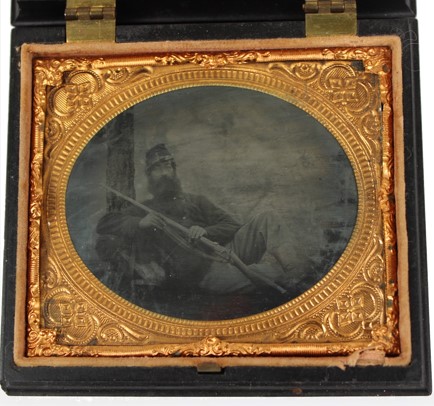BROWSE AN EXTENSIVE LIBRARY OF CIVIL WAR DOCUMENTS IMAGES AND PHOTOS
- More than 100,000 documents and counting.
- Text searchable records.
- Full text notes and letters.
- Filter by unit, date, equipment.
Ordnance Returns from Civil War: Search “The Quarterly Ordnance Reports”
Civil War Ordnance Returns
Civil War Photos
Civil War Letters
Research Arsenal’s Powerful Civil War Database
The American Civil War, fought between 1861 and 1865, left an indelible mark on the nation’s history. Amidst the chaos and carnage, meticulous records were kept to document the Union Army’s military assets. Among these records, the Federal Quarterly Ordnance Returns stand out as crucial documents, providing insights into the Union’s military logistics and armament. In this article, we will delve into the significance of Ordnance Returns, their digitization, and the invaluable database housed at the National Archives.
What are Ordnance Returns?
Ordnance Returns were quarterly reports submitted by each regiment of the Union Army during the Civil War. These reports meticulously documented the quantity and condition of military ordnance, including weapons, ammunition, and related equipment. The Union Army recognized the importance of maintaining accurate inventories to ensure proper logistics, distribution, and strategic planning.
These returns played a crucial role in assessing the readiness of the Union forces, helping commanders make informed decisions based on the available resources. The reports detailed the number and types of weapons, ammunition supplies, and even the condition of equipment, providing a comprehensive overview of the military capabilities of each regiment.
Exploring the Digital Collection: Ordnance Returns from the Civil War
The preservation of historical documents is paramount to understanding the intricacies of the past. In an effort to make these invaluable records accessible to researchers and history enthusiasts, the National Archives undertook the monumental task of digitizing the Federal Quarterly Ordnance Returns from the Civil War.
The digitization process involved converting these fragile and aging documents into a more durable and easily accessible format. Microfilm became the medium of choice, allowing for both preservation and efficient reproduction. Today, the digitized collection stands as a testament to technological advancements preserving history for future generations.
WHAT DO WE OFFER
The Research Arsenal offers access to all of the federal army ordnance returns from the Civil War in an easy-to-use way. You will be able to quickly filter by year, quarter, and regiment. All 8 rolls of M-1281 from the National Archives (NARA) have been uploaded to our unique database in a way that hasn’t been available until now.
NO CREDIT CARD NEEDED TO SIGN UP.
We offer a no-risk way to trying us out and see if we have what you want.
Simply log in (no credit card is needed) and start your search.
See if we have what you want before becoming a member!
THOUSANDS OF CIVIL WAR ORDNANCE RETURNS AT YOUR FINGERTIPS!
EASILY FILTER ALL ORDNANCE RETURNS FROM THE NATIONAL ARCHIVES
SEARCH YOUR FAVORITE REGIMENT
FILTER BY UNIT, BRANCH, YEAR, & MORE
ACCESS TO ALL 8 ROLLS OF NARA MICROFILM
(FEDERAL QUARTERLY ORDNANCE RETURNS M-1281)
ORDNANCE RETURN SEARCH FEATURES
Revolutionizing Civil War Research
The Research Arsenal makes it easy to filter through the more than 4,000 quarterly ordnance returns by Army, Corps, Regiment, and Company. For unique units given a name instead of a number designation (i.e.- Purnell Legion), simply search the name and find what you are looking for. No other site makes it this easy to search the ordnance returns by simple-to-use filters.
The ability to search records by date is important for Civil War research since the same regiment may have been issued multiple different weapons and uniforms as the Civil War progressed. Our easy-to-use filters allow you to select the specific year, quarter, month, and/or day. This dynamic filtering method makes it easy to compare the differences of a regiment before and after major campaigns.
The quarterly ordnance returns that we have made easily searchable show a wide variety of equipment that each regiment had during the American Civil War. From which type of rifle, to the number of cartridge boxes, to the number of cartridges per company. The detailed breakdown of every piece of equipment given to the soldiers is an amazing discovery each time!
The Trade of Civil War Photography: Rare Civil War Photos & Prints

As an avid researcher and admirer of Civil War photography, I became obsessed with the Library of Congress'[i] collection of original civil war photographs. When I started looking at their collection there was just under 10,000 images uploaded into their digital database. Now, there are more than 16,000 original civil war photos or related prints. It became increasingly clear that we are living in a unique period of time where archives around the country are realizing the value and need to digitize their collections and place them in databases accessible to the public. Thousands of images and documents are being scanned, tagged, and cataloged at amazing rates. The internet age and the advent of social media then forced another major change in the Civil War photo collecting community; that of online communities. It was in these communities that like minded individuals who collect, sell and trade period photos were able to connect on a level that had not previously been possible. People could easily accelerate their search for specific images that they had been looking for for years. Images that had never seen the light of day (virtually) were soon seen shared in these communities. Extremely rare and unique photographs started to pop up for all to admire, and this is the point which I believe created and solidified our next generation of collectors.
Individuals like myself, who belong to the hated millennial generation have taken up a large portion of those who search for and are purchasing and collecting these amazing windows into history. Having grown up with one foot in the pre-internet age and the other in the virtual world, we have realized the incredible value of digitizing as many original documents and photos as possible in order to facilitate better research and make discoveries and rewriting false history simply because we have been able to harness technology to progress our research beyond what many have ever dreamed possible.
For example, the amazing work done by the Civil War Photo Sleuth[i] is using facial recognition technology to identify previously unknown soldiers. Additionally, Civil War databases like the Research Arsenal are focusing on the material culture of the photos and tagging every item in the photo making it easier than ever to search thousands of photos for a specific item; such as a Philadelphia depot canteen, cavalry uniform jackets, or obscure aspects like how often soldiers tucked their coats into their pants. What used to take researchers or collectors hundreds of hours to search for now can take seconds.
Because of this explosion in access, research, and the ability to find the exact images that you want, the civil war photo collectors market is alive and well. This can be no better demonstrated than with the rise of online auctions dedicated to civil war militaria. A great example of this is the past few auctions that Fleischer’s Auctions has hosted. With the recent August 5th, 2023 auction, an image sold for a hammer price of $49,000 (nearly $60,000 with the buyer’s premium), it is perhaps the most expensive Civil War era photograph ever sold of an unidentified subject.
Navigate the Platform: Features of the Ordnance Return Search
One of the standout features of the Research Arsenal is its user-friendly interface, which empowers researchers to refine their searches based on key parameters. The platform facilitates searches by Year, Quarter, Regiment, and Corps, streamlining the process of extracting precise data for analysis.
In the past, researchers spent hours or even days sifting through physical documents, but the Research Arsenal has transformed this laborious task into a matter of seconds. The ability to filter Ordnance Returns by various criteria ensures that researchers can access the specific information they need without unnecessary complications.
For instance, the database’s unique filtering system allows users to focus on a particular time frame, making it easier to track changes in armament and logistics over the course of the war. Additionally, researchers can drill down to specific regiments and corps, providing a granular view of how different units were equipped and supplied.
Search Features of the Ordnance Return Database
Easy to use search features, so you can limit results by library, category, date, location, keyword and more. See related items easily.
Navigating through historical archives can be a daunting task, especially when dealing with vast amounts of data. The Research Arsenal, an innovative platform developed by the National Archives, has revolutionized the way researchers access and explore the Ordnance Returns from the Civil War.
The database encompasses a wealth of information, allowing users to search and filter data based on specific criteria. The Research Arsenal has simplified the research process, enabling users to extract relevant information efficiently.
CHOOSE A LIBRARY
Photographs & Images
Letters
Quartermaster & Ordnance Specs
US Ordnance returns
Search by Source/Call #
or browse all

SEARCH
BY KEYWORD OR
FILTER BY 12 CATEGORIES

VIEW RESULTS
• View/enlarge single images
• Read description

UNLOCK FEATURES, SIGN UP HERE
Beyond Ordnance Returns: Expand Your Civil War Knowledge
While the Ordnance Returns offer a detailed glimpse into the Union Army’s logistics, the Research Arsenal doesn’t stop there. This platform serves as a gateway to a broader understanding of the Civil War by providing access to an array of related documents and records.
Researchers can explore maps, personal letters, official reports, and other primary sources to gain a more comprehensive perspective on the events and dynamics of the Civil War. By leveraging the Research Arsenal, historians and enthusiasts alike can piece together a richer narrative of this pivotal period in American history.
The Federal Quarterly Ordnance Returns from the American Civil War are not mere documents; they are windows into the challenges, triumphs, and complexities faced by the Union Army. The digitization of these records and the creation of the Research Arsenal have democratized access to this historical treasure trove.
As we navigate the virtual halls of the Research Arsenal, filtering through the meticulous details of weaponry and logistics, we are reminded of the transformative power of technology in preserving and disseminating history. The Ordnance Returns, once confined to the dusty shelves of archives, now have a new life in the digital realm, ensuring that the sacrifices and strategies of the Union Army during the Civil War are not forgott
FREQUENTLY ASKED QUESTIONS
“Ordnance” refers to the branch of the military responsible for the procurement, storage, and handling of artillery, ammunition, and related military hardware. It was saddled with:
- Acquisition and procurement of weapons, ammunition, and artillery pieces for the army. This involved assessing the needs of the military, coordinating with manufacturers, and ensuring a sufficient supply of arms and munitions.
- Management of arsenals and armories where weapons and ammunition were stored, repaired, and distributed.
- Management of logistics and supply chains related to weaponry and ammunition, including transportation of arms and munitions to the front lines and ensuring that troops had access to the necessary equipment during campaigns.
- Research and development efforts to improve existing weapons and develop new technologies, creation and deployment of explosive devices, including mines and grenades.
During the Civil War, the Union sourced its supplies from various channels to support its massive army in the field. The logistics of supplying the Union forces were complex, involving a combination of:
- The Union government, led by the Northern states, played a central role in procuring and distributing military supplies.
- The North had a more developed industrial base where factories produced rifles, artillery pieces, ammunition, uniforms, boots, tents, and other essential items.
- The expansion of railroads in the Northern states facilitated the movement of troops and supplies.
- The Union also received support from foreign nations, particularly in the form of loans and purchases of war materials. European countries, such as Britain and France, had economic interests in the Northern states and were generally more sympathetic to the Union cause.
- Civilian organizations and individuals in the North actively contributed to the war effort by organizing fundraising events, providing supplies, and supporting soldiers.
- The Union established depots and logistical centers where supplies were stored, organized, and distributed. These depots, such as the ones in Philadelphia, New York, and Cincinnati, played a critical role in managing the flow of goods to the armies in the field.
The combination of effective government organization, a robust industrial base, and support from both the military and civilian sectors contributed to the Union’s ability to sustain its war effort with a continuous and well-managed supply chain.










